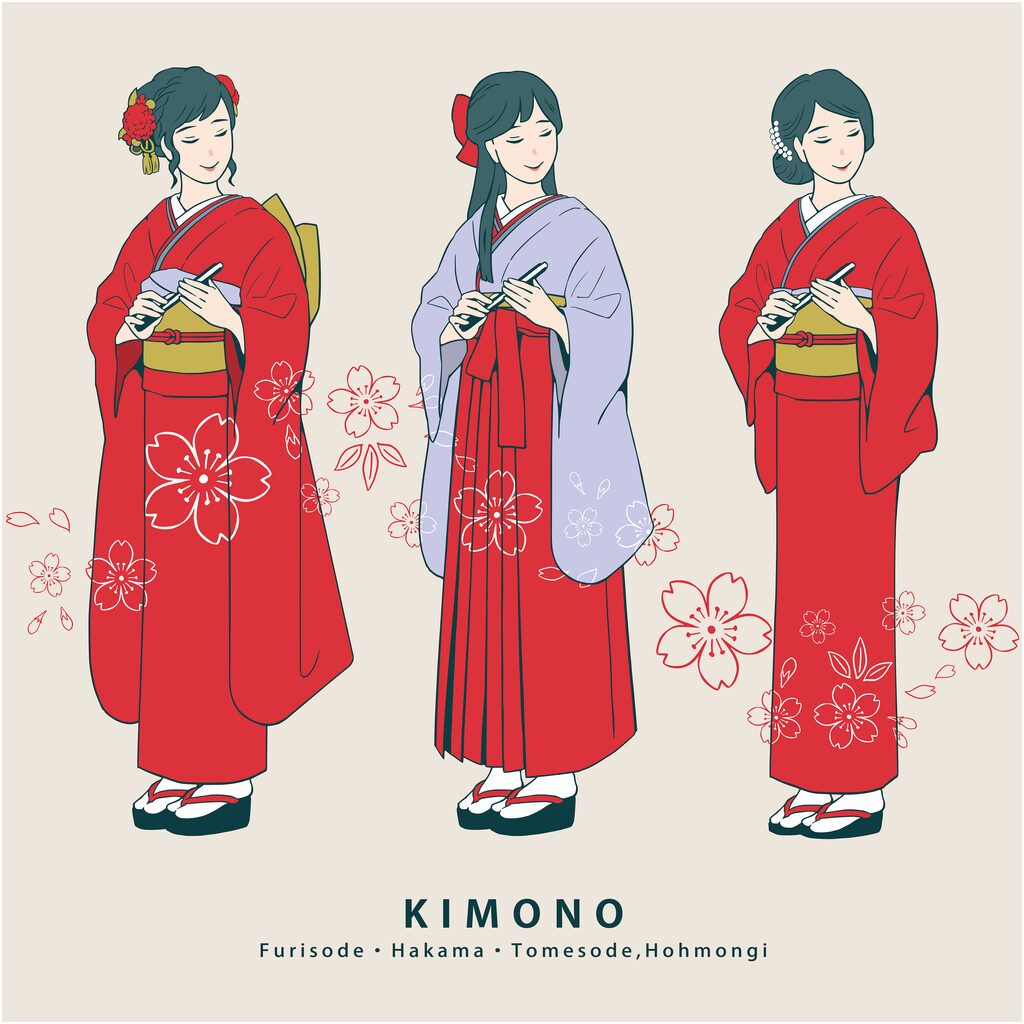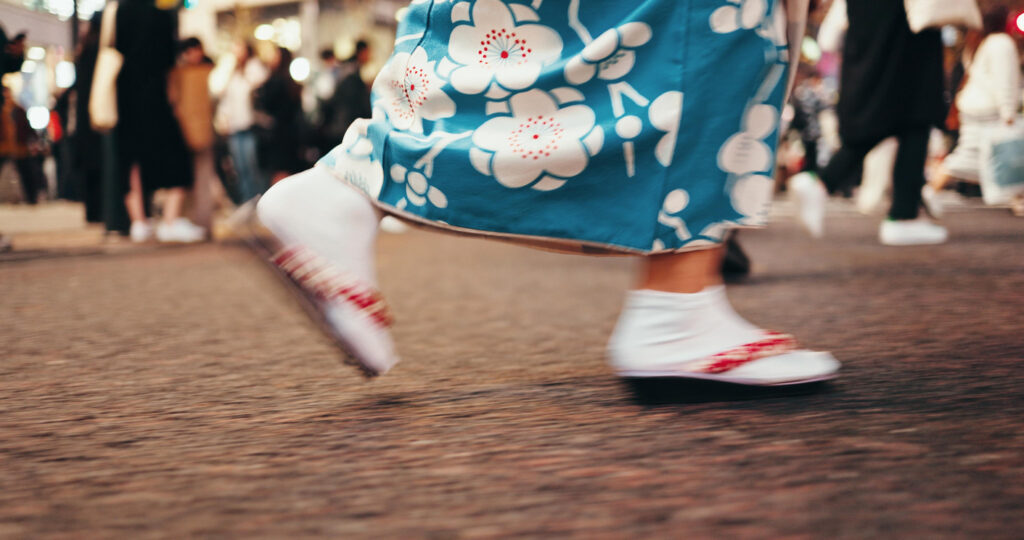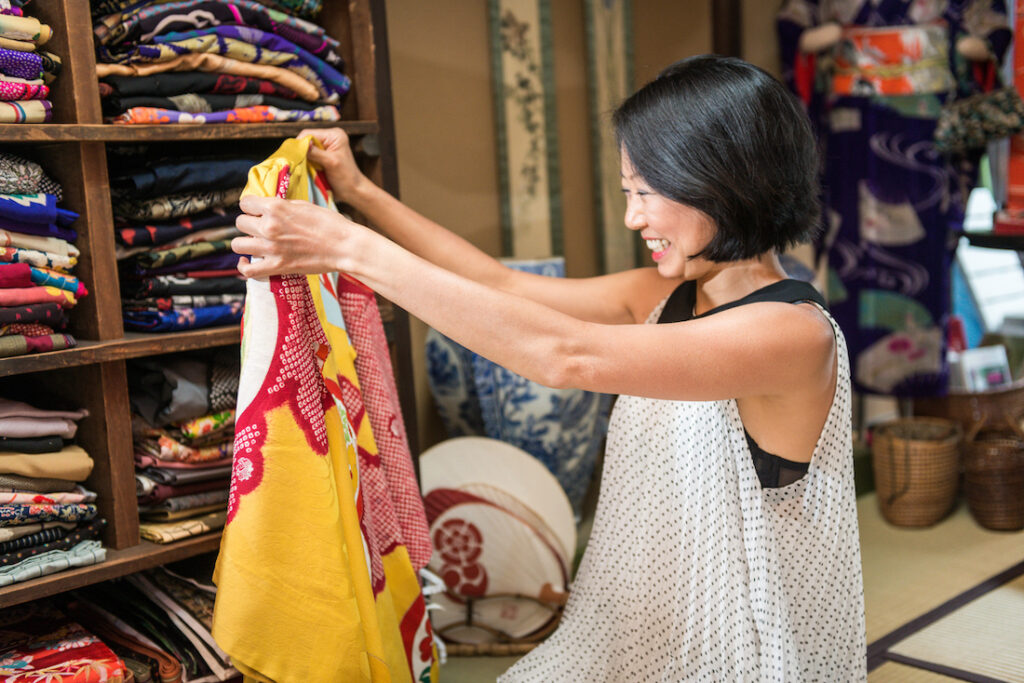Kimono rentals and photoshoots are a fun way to accentuate a visit to a famous shrine or seasonal flower viewing. Read on to learn some essential tips and tricks before you go!
Kimono, which literally translates to “thing to wear” is a long robe-like garment embellished with obi (belts) and other decorative items. Walking around in traditional clothing for a day is a popular activity, and not just for tourists and foreigners. If done right, it can be an enjoyable and rewarding way to experience traditional Japanese culture and a great way to connect with locals. But how do you go about your first kimono rental in Tokyo? Here, we will answer all your questions to make sure you know everything you need to know before you go.
What do you need to know before you book?
 © Photo by iStock: Toru-Sanogawa
© Photo by iStock: Toru-SanogawaFirst, consider when you are booking. A kimono, especially if you’ve never worn one before, can be hot and challenging to navigate, especially in warmer weather. The best time to rent a kimono is in the fall or early spring. Coincidentally, this is also the best time for photoshoots, as you can take advantage of the seasonal backdrop. If you go in the winter, sometimes rental shops will provide you with heat tech clothing to wear under the kimono to keep warm, but you can also bring coats and scarves to embellish your kimono. If you go in the hot summer months, skip the kimono altogether and rent a yukata.
The Different Types of Kimono: Iro-tomesode or Hohmongi, Furisode, Hakama and Yukata
 © Photo by iStock: NihonSugi
© Photo by iStock: NihonSugiYou may have heard these terms used for what seem to be very similar-looking garments. The easiest way to distinguish these traditional styles is by layers and types of fabric.
- Iro-tomesode or Hohmongi (the “classic kimono” style) are both formal traditional wear for kimono enthusiasts and married women. They are usually composed of the top decorative kimono and two or three layers of undergarments to help shape the outer layer.
- Furisode are similar to the iro-tomesode or homongi kimonos but have very long sleeves. They are traditionally worn by young unmarried women and are commonly worn on Seijin No Hi (Coming Of Age Day).
- Hakama are skirt-like pants worn over a kimono. Traditionally worn by samurai and horsemen, they are nowadays usually only worn on formal occasions such as university graduations, weddings and funerals, and by martial arts practitioners.
- Yukata are lighter, summer-wear garments, usually made with cotton and linens. They typically have shorter sleeves than kimono and require less undergarments. This is in keeping with the history of yukata: they were originally used as robes you’d wear to the bath or to sleep in. Nowadays, yukata are generally worn during hotter summer months and to summer festivals.
 © Photo by iStock: NihonSugi
© Photo by iStock: NihonSugiCan men wear kimono?
Although most men no longer wear kimonos for everyday wear, men can and still do wear kimonos for special occasions and traditional events. Most kimono rental shops in Tokyo will offer kimono, yukata and hakama rentals for men. Seeing that furisode is traditionally for young women, larger sizes may not be available.
How do you make an appointment?
 © Photo by iStock: Satoshi-K
© Photo by iStock: Satoshi-KAlmost all foreigner-friendly kimono rental shops have an online registration system where you can select a date, a kimono rental package and a time for reservation. I’d recommend booking a month in advance to get your first choice for timing, especially during the busier tourist months.
Should I book the hair-styling service with my kimono rental?
 © Photo by iStock: metamorworks
© Photo by iStock: metamorworksSome shops will offer hair styling in addition to the kimono rental. The people who work in these rental shops are used to working with various lengths of hair and are familiar with different types of up-dos that accentuate your neckline. They will do everything they can to make you look beautiful, and will also let you borrow hair ornaments to match your kimono. However, if your hair texture is curlier in nature, you might prefer to do your own hair as most of the hairdressers are used to handling straighter hair types.
It should also be known that many of these shops use hair waxes and sprays to lock in styles, and if you aren’t keen on washing that out later, you might want to skip the hair service. If you do skip, come with your hair in an updo. Part of the beauty of a kimono comes from the neckline, which is set off your neck to highlight your profile.
What should I bring to my appointment?
 © Photo by iStock: Satoshi-K
© Photo by iStock: Satoshi-KI recommend traveling light to kimono rental appointments. All shops will have a storage system where you can keep your clothing and personal items safe, but less is more.
Come with:
- Your phone, keys and wallet.
- Any jewelry you want to use.
- With your makeup look on.
- Comfortable footwear (in case you don’t like or fit the wooden sandals you are given as part of the rental—especially if you plan to walk around in your kimono all day.)
How do I get around in my kimono?
 © Photo by iStock: Satoshi-K
© Photo by iStock: Satoshi-K- Walking: Select a shop near where you want to explore or take photos and get out on foot.
- Public Transport: It’s fun to take a train or a bus in a kimono and often gives casual passersby a kick to see you all dressed up.
- Jinrikisha (Pulled Rickshaw): If you’re renting a kimono in Asakusa, riding a jinrikisha is a fun and traditional way to get around the area. The rickshaw puller often gives a tour as you ride.
What can/can’t I do in my rental kimono?
 © Photo by iStock: Jacob Wackerhausen
© Photo by iStock: Jacob WackerhausenMistakes happen, but to avoid damage to the kimono, it’s best to avoid eating or trekking over unsteady terrain. As for what you can do, you are mostly limited by your imagination. Kimono are just clothing items, after all, so the popular thing to do is photoshoots!
Is it worth buying a kimono instead of renting?
 © Photo by iStock: Ababsolutum
© Photo by iStock: AbabsolutumIt isn’t necessary unless you see a kimono you fall in love with and want to keep as a souvenir. Even then, all the kimonos I own stay in storage and hardly ever see the light of day, and they’re not exactly cheap. Renting is more eco-friendly and allows you to try out different styles and colors without having to make a substantial financial commitment.
Where are the best areas to wear a kimono in Tokyo?
 © Photo by iStock: drday
© Photo by iStock: drdayAsakusa
Asakusa is a classic neighborhood for wearing kimono. Not only are most kimono rental shops situated in this area, but it’s also close to Senso-ji Temple and other historic attractions, which make for nice backdrops for photos. If you want to try wearing a kimono but don’t want to feel like you’re sticking out, this is a great place to do it.
If you’re looking for a different place to show off your kimono, hop on the closest train and visit…
- Ueno: Soak in some fun and culture in your kimono with a visit to the Zoological Gardens or the Tokyo National Museum! Think of it as a two birds, one stone kind of situation.
- Harajuku: What better way to experience kimono fully than by exploring the many shopping streets of Harajuku, Tokyo’s fashion hub? Harajuku is lively and trendy, and is very walkable, which will make your experience even more fun.
- Kichijoji: It’s a little off the beaten track for kimono-wearing, but this is the area where you’ll find the Ghibli Museum and Inokashira park, two great places to wander and explore and have fun wearing your kimono.
3 Kimono Rental Shops in Asakusa
1. Hanaka Kimono
 © Photo by Hanaka Kimono
© Photo by Hanaka KimonoThis store offers kimono staples, but also trendier items like lace kimono.
- Address: Duel Asakusa IV 4F, 2−3−7 Kaminarimon, Taito City, Tokyo
- Average Price: ¥3,000 – ¥10,000
- Photoshoot Package: No
- Wear types: Kimono, Yukata, Furisode
2. Asakusa Taisho Romankan
 © Photo by Asakusa Taisho Romankan
© Photo by Asakusa Taisho RomankanThis rental shop offers kimono styles that are more reminiscent of the Taisho era for that truly Japanese 1920s vintage look.
- Address: 2-2-4 Asakusa, Taito City, Tokyo
- Average Price: ¥5,500 – ¥8,500
- Photoshoot Package: No, but photoshoot space is available to customers.
- Wear types: Kimono, Hakama
3. InKimono
 © Photo by InKimono
© Photo by InKimonoInKimono is a smaller shop that offers a bespoke all-inclusive kimono and photoshoot service. Kimono are hand-selected for clients, and each appointment includes a photoshoot.
- Address: 6-39-11 Asakusa, Taito City, Tokyo
- Average Price: ¥72,000 – ¥105,000
- Photoshoot Package: Yes
- Wear types: Kimono, Furisode, Hakama
3 Kimono Rental Chain Stores in Tokyo (With English Websites)
1. VASARA
 © Photo by VASARA
© Photo by VASARAThis is a popular kimono rental chain in cities all over Japan. It has multiple locations in Tokyo, though its most popular is the Asakusa Flagship Store.
- Tokyo Locations: Asakusa Flagship, Asakusa Sensoji, Asakura Ekimae, Ikebukuro, Ginza, Shinjuku, Shibuya, Akihabara and Hilton Tokyo Odaiba 2F
- Average Price: ¥4,000 – ¥15,000
- Photoshoot Package: No
- Wear types: Kimono, Yukata, Furisode, Hakama
2. Kimono Rental Aki
 © Photo by Kimono Rental Aki
© Photo by Kimono Rental AkiKimono Rental Aki has four easy-to-access locations in the Tokyo area. Studio photoshoot plans can be reserved in advance and added on from ¥3,300 for two digital prints. Location shoots are also available for ¥33,000 extra regardless of the number of people in your group.
- Tokyo Locations: Shibuya, Ginza, Ikebukuro and Yokohama
- Average Price: ¥5,500 – ¥9,900
- Photoshoot Package: Yes
- Wear types: Kimono, Yukata, Furisode, Hakama
3. Wargo Kyoto Kimono Rental
 © Photo by Wargo Kyoto Kimono Rental
© Photo by Wargo Kyoto Kimono RentalWargo Kyoto Kimono Rental’s English service store is located in Asakusa and offers a wide selection of traditional and modern kimono styles, including some vintage kimono.
- Tokyo Locations: Asakusa, Ginza (service in Japanese only)
- Average Price: ¥3,000 – ¥11,000
- Photoshoot Package: No
- Wear types: Kimono, Yukata, Furisode, Hakama
Do I need to know anything else?
 © Photo by iStock: Satoshi-K
© Photo by iStock: Satoshi-K- Remember that getting dressed in a kimono can take anywhere from 30 minutes to an hour, so factor that into your timetable.
- By wearing a kimono, you are trying on an important piece of Japanese cultural clothing. It’s important to be respectful of the clothes, and to the experts who dress you.
- More important than anything else is the reminder to have fun! Dressing up in a kimono is a great way to spend the day—enjoy this unique experience with your friends.